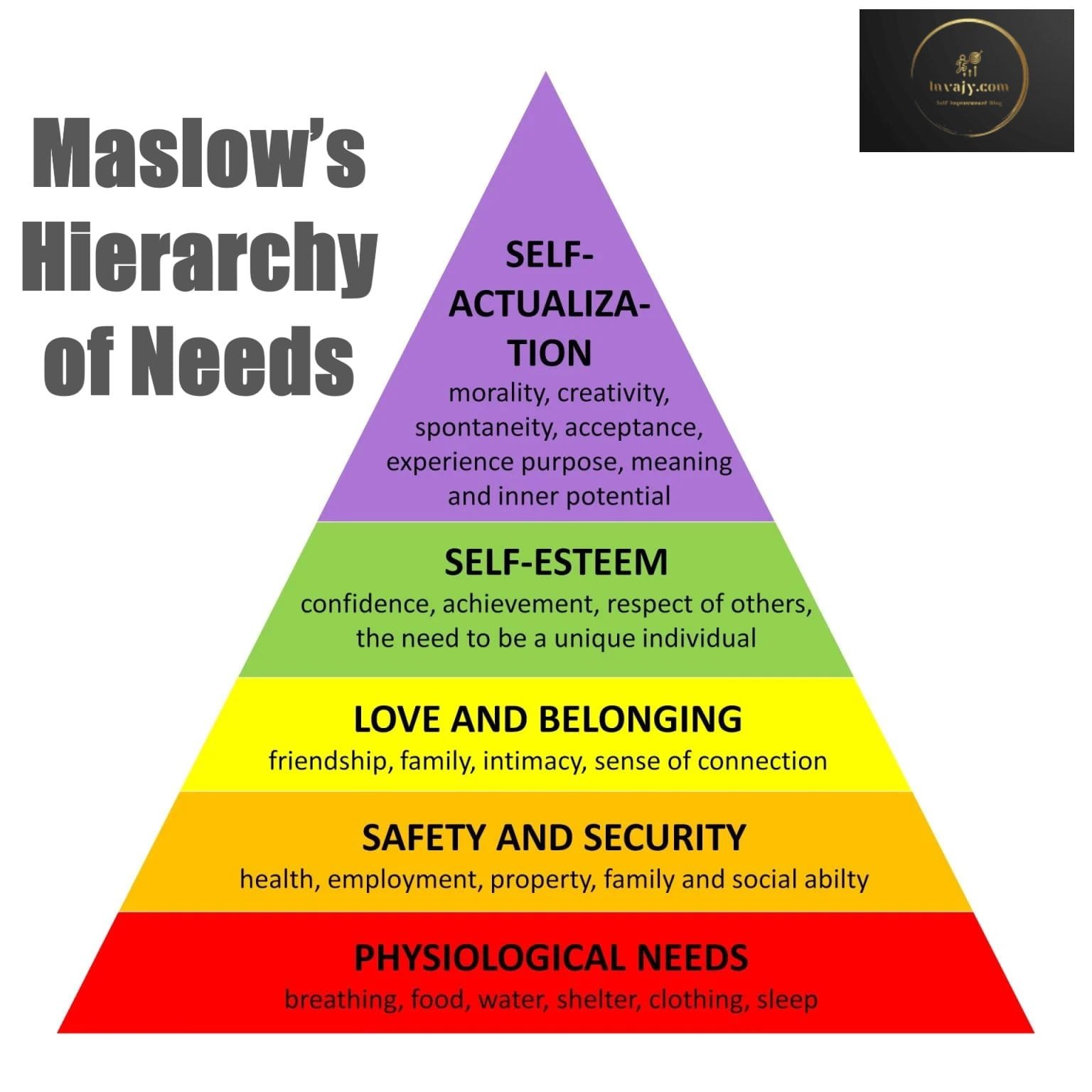Elevating Motivation Through Maslow’s Hierarchy of Needs
Explore how Maslow’s Hierarchy of Needs illuminates the path to motivation, guiding you from basic needs to self-actualization and personal growth.

Maslow’s Hierarchy of Needs helps us understand motivation and personal development.
Contents
What is Maslow’s Hierarchy of Needs?
Maslow’s Hierarchy of Needs is a psychological theory proposed by Abraham Maslow in 1943, often depicted as a pyramid consisting of five levels of human needs. These human needs were arranged in a hierarchy, with physiological (survival) needs at the bottom, and the more creative and intellectually oriented ‘self-actualization’ needs at the top. In other words, the idea is that individuals’ most basic needs must be met before they become motivated to achieve higher-level needs.

Maslow argued that survival needs must be satisfied before the individual can satisfy the higher needs. The higher up the hierarchy, the more difficult it is to satisfy the needs associated with that stage.
Higher needs become increasingly psychological and long-term rather than physiological and short-term, as in the lower survival-related needs.
Here’s a closer look at each level and how it can guide you toward self-actualization.
1. Physiological Needs
These are the basic, fundamental needs required for survival, such as food, water, shelter, and sleep. These Physiological Needs are the first thing that motivates our behavior. Once that level is fulfilled, the next level up is what motivates us, and so on.
The human body cannot function optimally if physiological needs are not satisfied. Maslow considered physiological needs the most important as all the other needs become secondary until these needs are met. If these needs aren’t met, it’s difficult to focus on anything else.
Self-Help Tips:
- Prioritize your health by maintaining a balanced diet and staying hydrated.
- Create a safe and comfortable living environment.
- Ensure you get adequate sleep and rest.
2. Safety Needs
Once an individual’s physiological needs are satisfied, the need for security and safety becomes salient. This includes physical safety, financial stability, emotional security, financial security (e.g., employment, social welfare), law and order, freedom from fear, social stability, property, health, and well-being (e.g., safety against accidents and injury).
Self-Help Tips:
- Assess your financial situation and create a budget to enhance security.
- Establish a stable routine to foster a sense of control in your life.
- Consider investing in health insurance or emergency funds for peace of mind.
3. Love and Belongingness Needs
Humans are inherently social beings, seeking connection and belonging. After physiological and safety needs have been fulfilled, the third level of human needs is social and involves feelings of belongingness. This level encompasses relationships with family, friends, and community.
Self-Help Tips:
- Nurture existing relationships by spending quality time with loved ones.
- Join clubs or groups that align with your interests to meet new people.
- Practice open communication and vulnerability to deepen connections.
4. Esteem Needs
Maslow classified esteem needs into two categories: (i) esteem for oneself (dignity, achievement, mastery, independence) and (ii) the desire for reputation or respect from others (e.g., status, prestige). Achieving this level leads to feelings of accomplishment and self-worth.
Self-Help Tips:
- Set realistic goals and celebrate your achievements, no matter how small.
- Practice self-affirmation and positive self-talk to boost your confidence.
- Seek constructive feedback to improve and grow.
5. Self-Actualization Needs
At the top of the pyramid is self-actualization, where individuals realize their full potential and pursue personal growth, creativity, and self-discovery. Maslow describes this level as the desire to accomplish everything that one can, and “to become everything one is capable of becoming”.
Self-Help Tips:
- Identify your passions and interests, and pursue them actively.
- Set long-term goals that challenge you and push you out of your comfort zone.
- Reflect regularly on your experiences and emotions to foster personal insight.
Wrapping Up!
Maslow’s Hierarchy of Needs offers a valuable framework for understanding personal development. By addressing each level, you can create a solid foundation for a fulfilling life. Remember that this journey is unique to each individual, and it’s okay to seek support along the way. Embrace the process of growth, and take small steps toward achieving your fullest potential.






